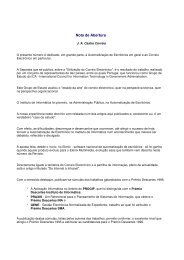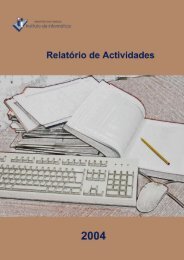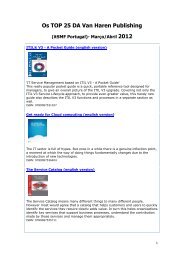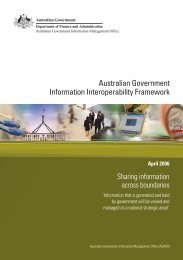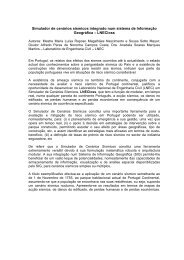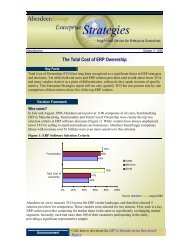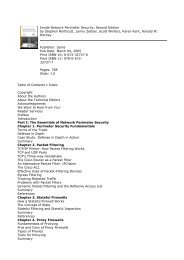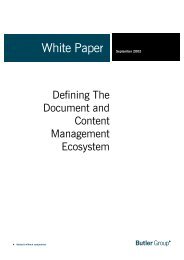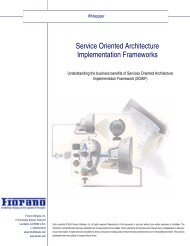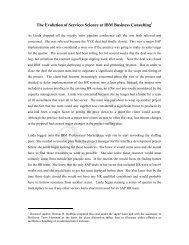OECD Peer Review of E-Government in Denmark - ePractice.eu
OECD Peer Review of E-Government in Denmark - ePractice.eu
OECD Peer Review of E-Government in Denmark - ePractice.eu
Create successful ePaper yourself
Turn your PDF publications into a flip-book with our unique Google optimized e-Paper software.
• A quantitative study conducted for the Digital Task Force that asked 2,200 citizens about<br />
their knowledge and use <strong>of</strong> e-government services, and their attitudes towards them.<br />
• A qualitative study undertaken by the MVTU that looked at citizens’ digital communication<br />
with the public sector.<br />
• A survey <strong>of</strong> how Danish bus<strong>in</strong>esses perceive and use e-government, conducted jo<strong>in</strong>tly by the<br />
Danish Commerce and Companies Agency and the Confederation <strong>of</strong> Danish Industries.<br />
Quantitative study <strong>of</strong> citizen demand for e-government<br />
The Digital Task Force study aga<strong>in</strong> highlights Danes’ relatively high level <strong>of</strong> use <strong>of</strong> the Internet<br />
to deal with government, with 82% <strong>of</strong> respondents stat<strong>in</strong>g that they had used a public sector Web site,<br />
and only 13% say<strong>in</strong>g that they had never communicated digitally with the public sector. It also showed<br />
that the Internet has not yet become the primary channel for contact with government; at 34% it was<br />
second to the telephone, which was the preferred means <strong>of</strong> contact<strong>in</strong>g government for 43% <strong>of</strong> Danes.<br />
The study also showed that, for many e-government services, the majority <strong>of</strong> Danes did not know<br />
about the service and/or did not f<strong>in</strong>d it relevant to their own circumstances. This was particularly the<br />
case for services that have a relatively narrow user base, such as onl<strong>in</strong>e access to wait<strong>in</strong>g lists for day<br />
care <strong>in</strong>stitutions or applications for various allowances. The most widely known e-government<br />
services were: 1) the generic “self-service/fill<strong>in</strong>g <strong>in</strong> forms” type <strong>of</strong> service; 2) onl<strong>in</strong>e access to the<br />
health sector via the www.sundhed.dk health portal; 3) access to municipal e-government services via<br />
the www.netborger.dk municipality portal; and 4) search<strong>in</strong>g for employment via www.jobnet.dk.<br />
There was also good awareness <strong>of</strong> e-government services related to deal<strong>in</strong>g with property, and mov<strong>in</strong>g<br />
and chang<strong>in</strong>g address. In terms <strong>of</strong> actual service usage, the most heavily used were onl<strong>in</strong>e job<br />
search<strong>in</strong>g, and access to <strong>in</strong>formation and services through the health and municipality portals.<br />
The survey revealed that Danes’ attitudes towards digital communication with government were<br />
significantly positive, with 53% <strong>of</strong> respondents say<strong>in</strong>g that they were completely conv<strong>in</strong>ced that<br />
e-government made it easier to deal with government, 51% say<strong>in</strong>g that it saved them time, and 37%<br />
say<strong>in</strong>g that they fully believed that e-government would make the public sector more efficient. Nearly<br />
half (47%) <strong>of</strong> respondents expected to use more e-government services <strong>in</strong> the future, and 40% were<br />
fully conv<strong>in</strong>ced <strong>of</strong> the benefits <strong>of</strong> acquir<strong>in</strong>g a digital signature. Overall, almost 80% <strong>of</strong> the respondents<br />
felt that e-government made everyday life easier.<br />
The most significant outcome <strong>of</strong> this study so far is that it has provided the basis for the Digital<br />
Task Force to proceed with a major national market<strong>in</strong>g campaign for e-government. The three-month<br />
campaign was launched <strong>in</strong> August 2005. Considerable resources are be<strong>in</strong>g put <strong>in</strong>to this project, which<br />
so far <strong>in</strong>volves almost 100 <strong>of</strong> <strong>Denmark</strong>’s 382 government organisations. Some key features <strong>of</strong> the<br />
campaign are:<br />
• There will be more than 800 TV commercials advertis<strong>in</strong>g eight different digital services for<br />
citizens. These services will also be marketed through newspaper advertisements, Internet<br />
banners and radio spots.<br />
• The project has developed market<strong>in</strong>g templates that all public organisations can freely use<br />
and adjust to their needs. These templates make it possible to develop local market<strong>in</strong>g<br />
campaigns (e.g. for a municipality to advertise the digital services it provides for its<br />
citizens). There are templates for newspaper advertisements, Internet banners, radio spots,<br />
bus advertisements, posters, brochures, post cards, e-mail attachments, etc.<br />
121



